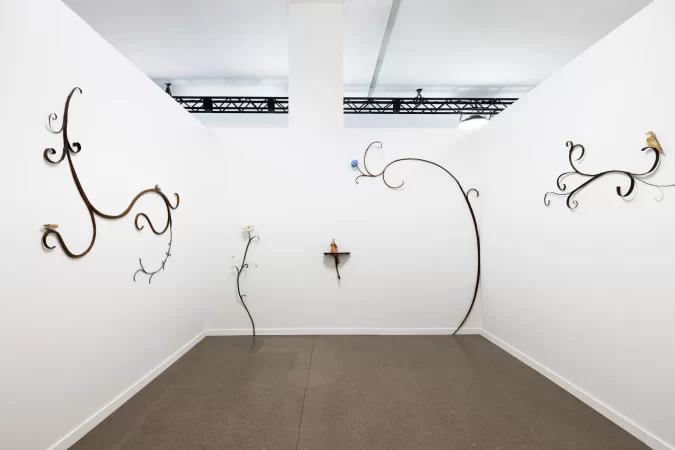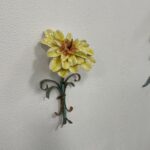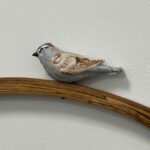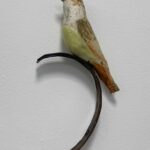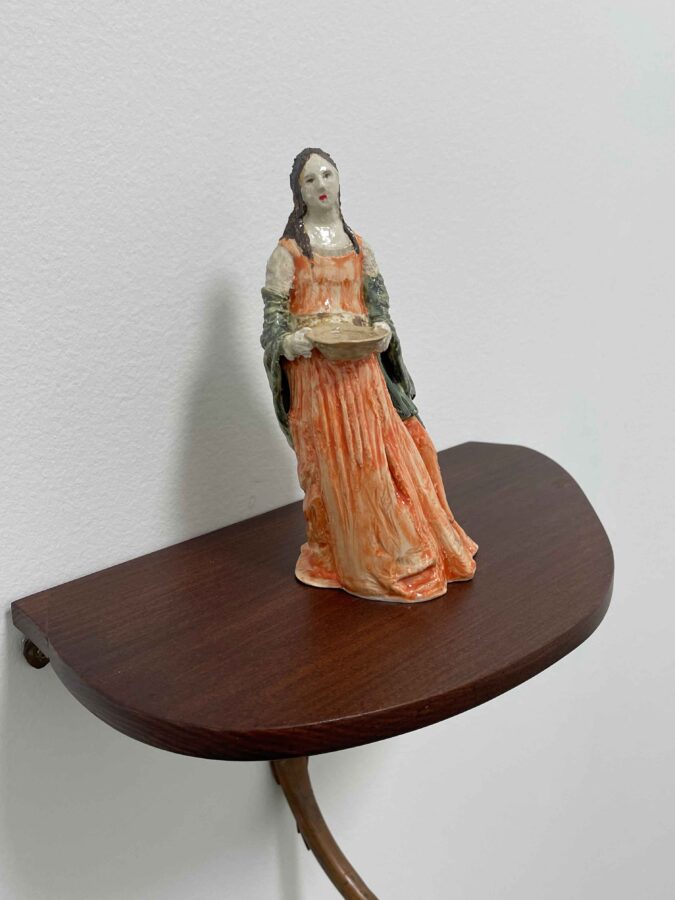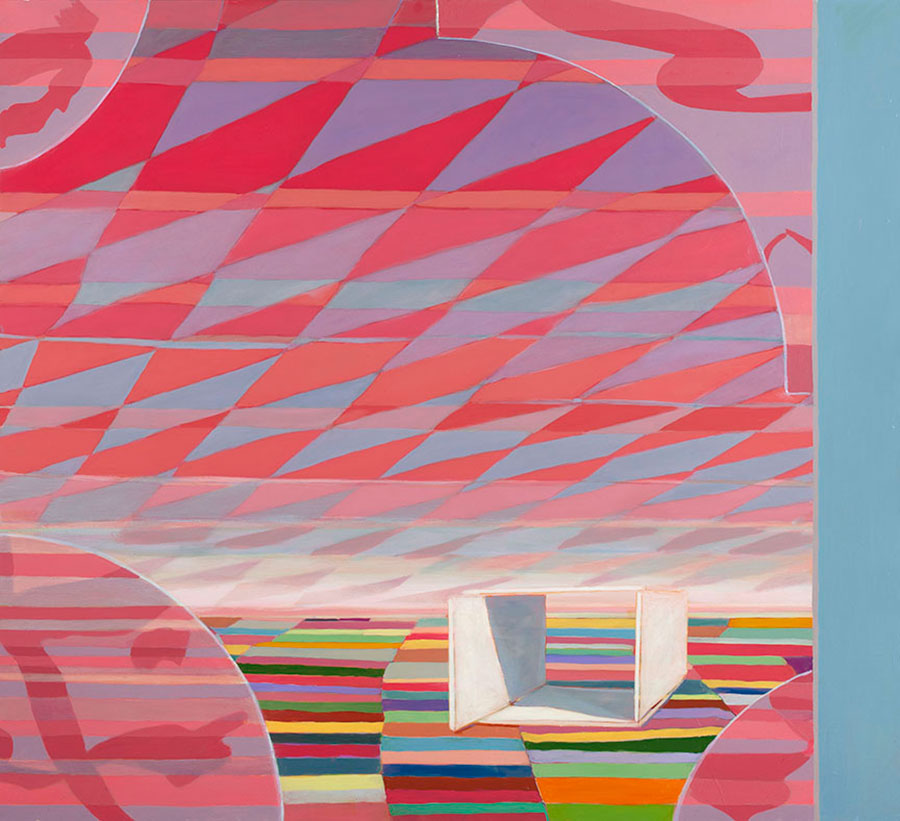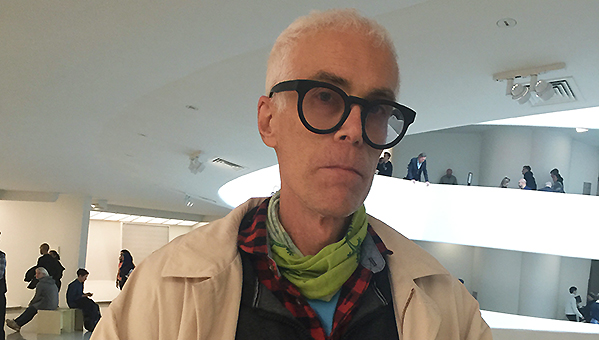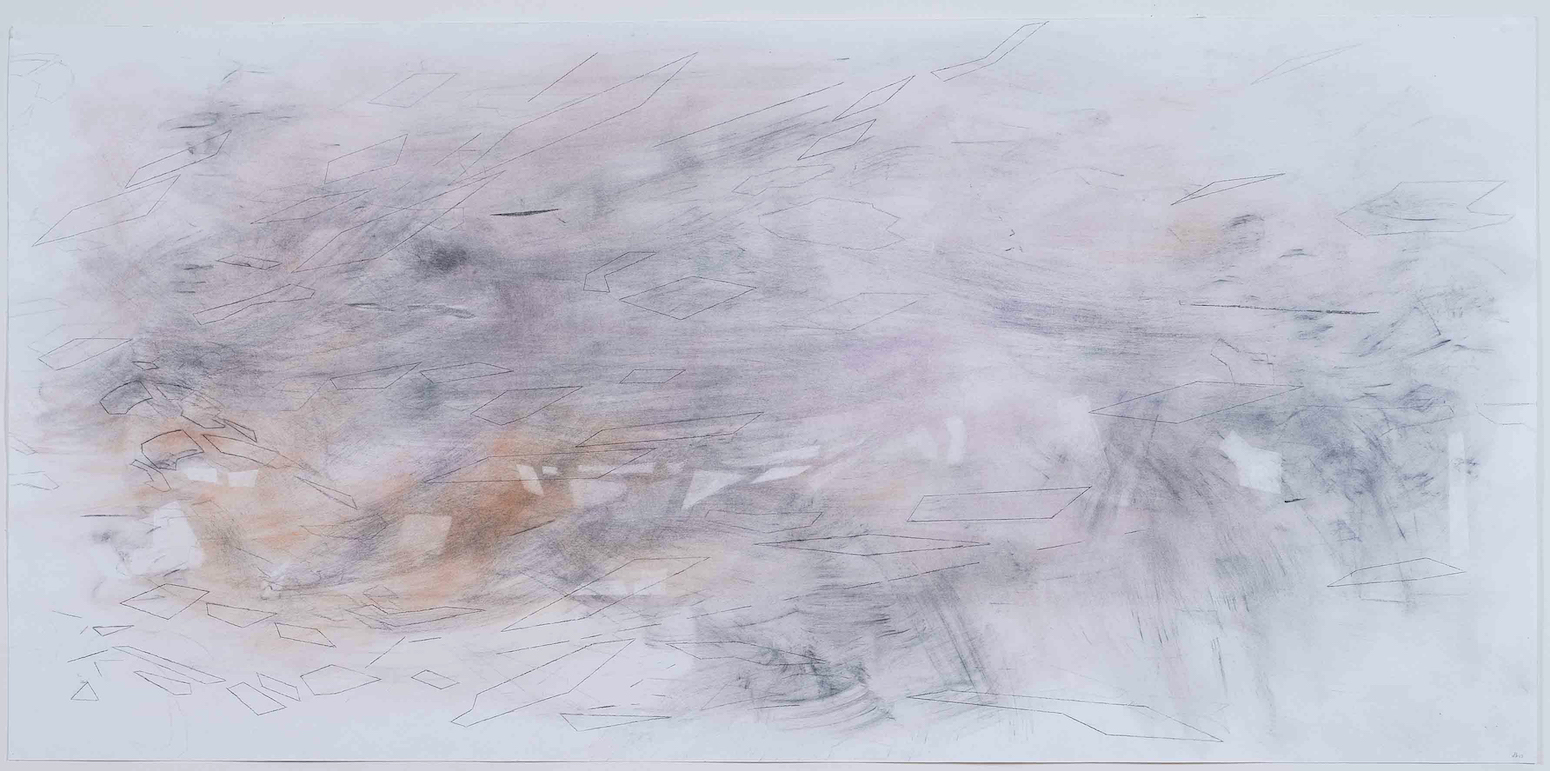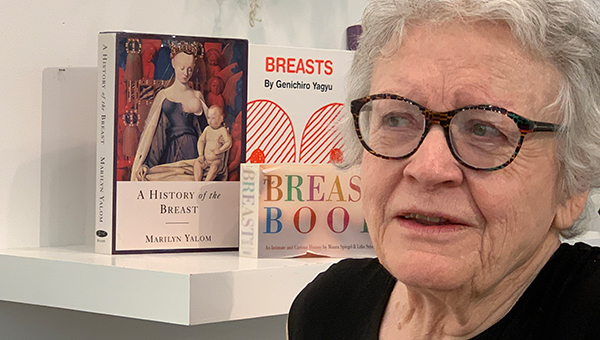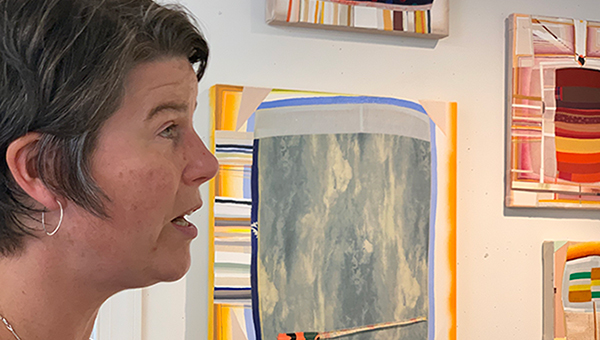Mary Carlson at Independent
I-phones come pre-loaded with a function wherein from a photograph of a plant the phone bounces back at you the name, the genus and the family of the plant. My I-phone identifies Mary Carlson’s diminutive, porcelain sculpture of a yellow Zinnia as a Mediterranean Strawflower, or as an elm tree; the phone is unsure. How concerned Carlson is for the magisterial voices of Silicone Valley’s knowledge purveyors is moot. Her ceramic portraits of saints have for some time now inevitably been entangled with other voices that bear knowledge. Like those that recite the canon law of the Catholic Church or the traditions of Western art history. Always it has seemed Carlson positions herself at an oblique angle to these voices gnawing away at their edges, I have often thought, but not needing to stare them down. At Independent she inhabits the standard art fair white-cube with a paired down landscape populated by her characteristic ceramic birds, flowers and a lone saint, Dorothea. The birds perch on torqued and twisted slivers of laminated plywood that conjoin, delicately, with steel armatures and curlicues of patinated copper tubing. The installation seizes the generic art fare booth in a way that little else at the fare does and transforms it into, simultaneously, an approximation and a barren caricature of habitat. If there is a center piece, a focal point, to the installation it is that ceramic statue of Dorothea the patron saint of, as it happens, gardeners. Not surprisingly then, given the context, the primary garden of all gardens, Eden, comes to mind.
Carlson has typically sourced her renderings of saints from the art historical canon. Here she works from Fransico de Zurbaran’s Saint Dorethea which she embodies as a twelve-inch-tall porcelain figure. Traditionally Dorothea is rendered as a virgin, which knowledge is encoded in the iconography of flowers that invariably accompany her. In Zurbaran’s painting we see her carrying a basket overfilled with blooms and apples. With Carlson the flowers have been ditched, and Dorothea totes an empty basket. So, Carlson as an iconoclast? Probably not. Hers is more a dialogical engagement with a particular history in which Christian mythology and artmaking are complexly entangled as are that history’s encoding of desire and its sublimation.
The very barrenness of the installation, the scant foliage, the deleted signs of Dorothea‘s chasteness, add up to a recalibration of the already known. We know what did and did not happen in Eden; God named the earth and the sky and gave Adam naming rights to the flowers and animals; then the exit sign! But I don’t think Carlson is in the naming game. (Leave that to Apple). Her game here is puzzling through signs and symbols of pleasure and desire –or their omission– and how they are intertwined with both secular and Christian raptures and then, very much not to be overlooked, how they also become interlaced with visual pleasure.
The garden of Eden is the Ur time and space of desire and its regulation. As such the denuded Eden Carlson installed at Independent is testimony to the contortions of meaning-making that define studio time for so many artists; it is not a genuflection to history’s canon. How does the artist at work in her studio torque or transform the borrowed image or device and to what end? What is the end game of such a semiotic subversion?
For Carlson trades are made in the stock of visual pleasure. Loaner images from, here the baroque, are tampered with just enough to retroactively problematize the canon. Thence the new images are allowed to move forward signaling similarly but, importantly, somewhat differently. The image, of Dorothea, is no longer a devotional object, per se, even if that aura hovers in some margin. For some the devotional history may harbor an unsettling edge, a haunting? Ghosts aside I think Carlson’s job could be described as extracting the beauty of the painting, perhaps even the grace of its foundational allegory while setting aside the religiosity. The religion is assigned to a closed discourse. Carlson opens things up. Which is a bit like saying that Carlson’s Dorothea is, and is not, the same Dorothea as Zurberan’s and the Vatican’s. For the viewer of Carlson’s work holding that paradoxical sign in place is the task and pleasure.
